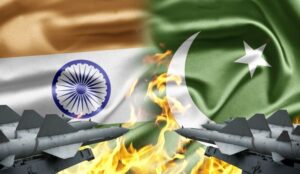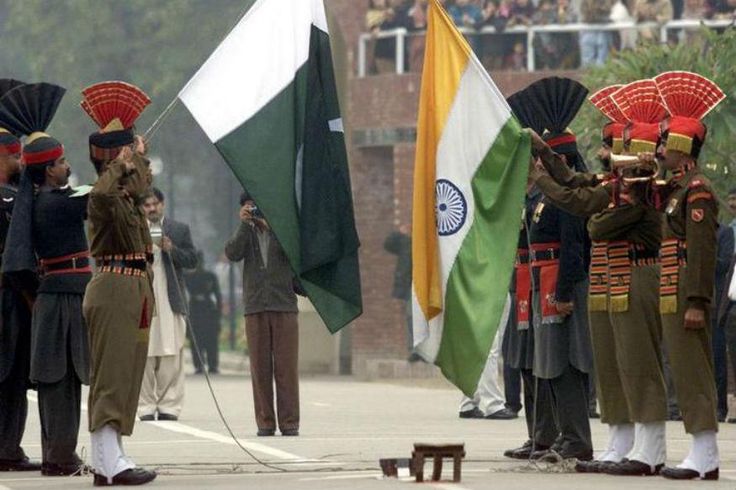India-Pak tensions exist in a crucial rivalry stage where diplomatic and military tensions increase swiftly throughout all diplomatic and military sectors along with substantial public awareness. Intensified formal diplomatic communication along with backchannel negotiations is active right now because both nations work diligently to manage this unstable situation and stop a wider conflict from escalating. The world observes South Asia closely since the region exists in a precarious state that threatens to evolve into a full-scale crisis.

Historical Context of India-Pakistan Relations
Negative relations between India-Pak tensions derive from the Partition tragedy of 1947 and the battles fought in 1947–48 1965 and 1971. Kashmir remains the core disputed area between the two countries because both Pakistan and India claim complete ownership but share different sections of territory. Both countries’ nuclear weapon testing from 1998 dramatically changed the game in case of a conflict increasing the danger level to Mutual Assured Destruction levels.
Different confidence-building measures (CBMs) and diplomatic summits as well as bilateral agreements functioned to ease tensions between both sides through the years. The attempts at peace-making between the nations frequently collapse thanks to terrorist incidents and hostile political positions combined with cross-border attacks. South Asia maintains an extremely fragile border which separates peace from military conflict.
Recent Escalation: A Brewing Storm
A combination of aggressive activities along the Line of Control (Loc) and fresh terrorism-related scare has sparked the current elevated conflict level. Alarming signs emerged from the Loc area when artillery pounded the region while drones crossed the boundary and military forces showed signs of increased presence.
India experienced nationwide anger because India-Pak tensions -based militants conducted a military convoy attack in Jammu and Kashmir. When India received aggressive statements from their government they promised counteractions while declaring potential “serious consequences” to Pakistan.
Pakistan denies carrying out the attack while expressing disapproval toward Indian military violations at the border. A state of alert exists throughout Pakistan’s armed forces due to which their diplomats received immediate diplomatic summons from the government.
Domestic Political Dynamics at Play
Multiple political events within each nation influence the current increase in India-Pak tensions. The central government faces escalating pressure regarding national security because upcoming state elections coincide with an increase in local nationalism.
The internal political turmoil together with economic issues and military-civil disputes in India-Pak tensions generate distinctive pressures on national foreign policy. As a powerful political force within Pakistan military often determines how the country formulates its India policy. Public unity has consistently formed around India confrontation during periods of internal political vulnerabilities in Pakistan.
Three forces unite to oppose de-escalation because of political motivations alongside nationalist media coverage and security anxieties. None of the governments benefit from seeming weak since the absence of substantial gains from heightened tensions can make their capitulation appear ineffective.
The Role of Media and Public Opinion
Media organizations throughout both countries function as major forces which heighten their nations’ current hostility levels. The headlines in news stories mostly display sensationalism and accusations and patriotic fervor dominates coverage. The media in India presents jingoistic prime-time discussions that counteract Pakistani media focusing on narratives of persecution and rebelliousness.
The spreading polarization between nations became worse through social media because it intensifies anger through viral videos along with hash tags and memes that spread inaccurate information. Earlier resentments combined with current public fury have established conditions that restrict diplomatic freedom for political leaders.
The voices of civil society who advocate for peace have encountered two obstacles: manipulation through marginalization by hostile groups and being accused of disloyalty against the nation. A narrowed environment for moderate discussion alongside complicated reconciliation efforts occurs as a result.
Military Readiness and the Risk of Miscalculation
India-Pak tensions operate extensive military forces which extended back to previous battle engagements between both nations. The Loc region and Pakistan’s air defense systems stay on high alert because of military forces deployed in the area which creates a hazard of accidental escalation. Every little incident starting from incorrect targeting through forceful maneuvers carries the potential to start a larger conflict.

The current hotlines used by military personnel from both sides continue to function yet mutual trust levels remain minimal. Reported by international observers the parties need to restore their support for de-escalation processes and ceasefire agreements in order to avoid accidental military reactions.
International Reactions and the Global Stakes
International leaders maintain intense observation of the ongoing tense situation between India-Pak tensions. Behind their public statements the United States works through diplomatic channels to promote dialogue between India and Pakistan according to indications. As a friend of Pakistan but also an important trading partner with India China has asked for peaceful conduct without expressing support for either side.
Russia together with EU members and Gulf nations displayed their worries about South Asian stability because of its negative economic effects. Among its two billion residents the area contains nuclear powers that demonstrate global security concerns from any regional confrontation.
The threat of regional destabilization triggered support for India and Pakistan to start formal diplomatic conversations between their nations. A political vision coupled with international mediators may serve to initiate such talks although this needs genuine boldness from potential parties.
Conclusion: A Path Forward?
Near-conflict times prove that diplomacy has demonstrated potential to succeed according to historical data. Cooperative backchannel talks alongside international mediation and people-to-people exchange programs should be used to stop India-Pak tensions from continuing toward disruption. True peace becomes possible through open-mindedness and transparency which enables both countries to resolve fundamental issues starting with India-Pak tensions .
The current state of pressing challenges throughout the region including climate change and economic inequality cannot benefit from renewed hostility because it harms both short-term and long-term interests. Leaders of both countries need to value conflict expenses while they understand dialogue’s transformative capabilities. World nation’s stand together to hope that diplomatic efforts will produce the necessary results to prevent catastrophe.

